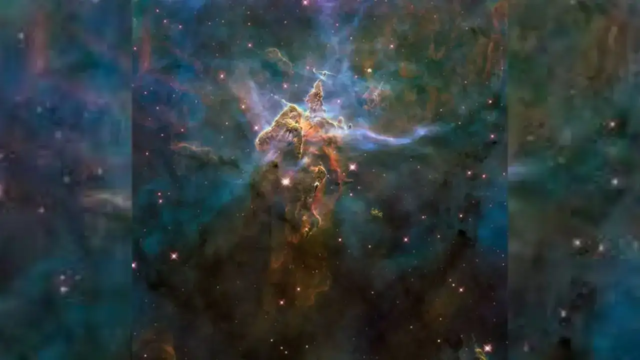Satellites can end every manned mission in the future

Friends, have you ever thought that when satellites sent by humans to space get damaged or what will happen to them after you have completed the work. Let’s know. When the work of these satellites is completed or gets damaged, then they are included in the waste of space. Space waste includes wrecked spacecraft, rockets, remains of satellite launch vehicles, astronaut gloves, nutbolts, tightening devices, and detached sheets from the satellite.
This is the waste associated with the mission, which is left behind after the original work. NASA estimates that about one debris per day either falls on the Earth or gets destroyed by burning as soon as it enters the Earth’s atmosphere. Since about 70 percent of the earth is made up of water, most of the garbage also falls in these areas.
Scientists say that so far no damage has been reported due to the fall of garbage. Because this waste gets destroyed by burning as soon as it enters the earth’s atmosphere. But if a large piece is not completely destroyed and enters our atmosphere, then it can cause disastrous effects. You will be surprised to know that these satellites keep roaming in the form of garbage in space itself. Sometimes they collide with each other and explode in it, due to which it splits into small pieces. These small satellite fragments moving in space have the power to spoil or destroy our spacecraft and communication satellites.
Satellite going into space started from 1957
Since 1957, when Russia sent the world’s first artificial satellite Sputnik-1 into space, thousands of satellites, spacecraft, space shuttles, space stations have been installed in space by various countries till date.
According to an estimate, more than 23,000 satellites have been delivered to space by different countries so far. And you will be surprised to know that out of this only about 1200 satellites are active i.e. only 5 percent of the total sent satellites are currently in working condition, while the remaining 95 percent satellites have been damaged and have taken the form of garbage. These 95 percent of these useless artificial satellites are still revolving in their orbits and increasing the waste of space.
Garbage is increasing in space
In space, these garbage satellites collide with each other and due to this collision, small pieces of satellite are spread in space and these new pieces then collide with another satellite and the number of these fragments in space is increasing. Kessler syndrome, is called by which more new pieces are made and in the same way the number of these fragments is increasing in space, due to which thousands of new fragments are being generated every day and as the number of fragments is increasing, Working satellites or someone being sent into space from Earth, the risk of hitting the spacecraft is increasing.
Similarly, in 2007, China tested an anti-satellite weapon, by which it destroyed one of its own weather information satellites in space itself, thousands of pieces of waste generated from it are still floating in space. And in this way, space waste is increasing in the form of metallic fragments due to collision of satellites or colliding with their fragments, objects, satellites, space stations etc.
According to the Space Surveillance Network of the United Nations, there are about 23,000 such fragments larger than 10 cm in space, about 5 lakh larger than one centimeter and more than 10 million such fragments larger than one millimeter. These have been tracked with a device called LIDER (combination of radar and optical detector). This debris can be very dangerous for space, because of its speed, it keeps moving in our space at a speed of about 5 miles per second. In such a situation, if these debris moving at a high speed collides with the space station or rocket, there can be a lot of damage.
May increase the risk
The European Space Agency (ESA) says that if space waste from satellites and rockets is not cleared from Earth’s orbit, the risk of accidents will increase further. Due to this, there may be loss of crores to the satellite operators, as well as mobile and GPS networks may also come to a standstill. With the help of satellites, countries are able to take advantage of the means of communication. On satellites, along with mobile, TV, Internet and other communication systems of a country, tele-education, tele-medicine, village resource center and disaster management system (DMS) programs, defense systems depend.
In such a situation, if our important satellite collides with these space waste for some reason, then think what will happen to humans on earth? Especially during a terrible natural calamity. If satellites collide with each other or get destroyed by collision of space waste, then the ill effects of this on normal life can be estimated. At the same time, if a large body of space waste falls on a densely populated city, then naturally it can also cause great loss of life.
Apart from this, this satellite harms us in many other ways. Scientists think that artificial satellites orbiting the Earth are increasing the brightness of the night sky. This brightness is more than what was being understood. According to a recent research, the number of objects circling the Earth is increasing the brightness of the sky above our entire planet by 10 percent. The research was published in the Monthly Notices of the Royal Astronomical Society. A limit that astronomers set 40 years ago has now been exceeded, making the sky more prone to light pollution.
Speed is 24 times faster than sound!
Some scientists have estimated that at present, there are more than 700 tons of garbage floating in space. According to space scientists, these waste bodies orbiting in space may be floating at a speed of 30,000 kilometers per hour. Meaning, this garbage keeps moving in space with about 24 times faster than the speed of sound. And friends, this speed is so high that these pieces can tear apart any satellites, space shuttles, space stations, astronauts doing spacewalk. At this speed even the smallest piece can destroy an aircraft or a satellite. And it can prove to be very dangerous for us.
For example, a piece of about one millimeter was hit with great speed in the window of the International Space Station in January 2017, causing the window to break. Another similar incident happened in 1996, when a French military satellite while orbiting its orbit collided with a fragment of a French rocket that had exploded ten years earlier. All the space agencies of the world are also working together to solve this serious problem. And is engaged in finding a solution to this problem, but till now no one seems to solve this problem except to clean the waste of space.
After all, where do these bad satellites go?
In fact, when the purpose of these satellites is fulfilled, even after that, due to ‘cosmic velocity’, these satellites keep revolving in that orbit, but due to atmospheric ‘drag force’ their speed gradually decreases. It starts coming and the result is that these satellites start falling towards the earth while revolving on a spiral path.
When these satellites enter the relatively denser part of the atmosphere, atmospheric friction generates so much heat that these metallic wastes ignite even before they fall to Earth. And eventually it turns into an ash and they fall towards the earth, but sometimes it happens that due to the size of the body, it does not burn completely and these half-burnt pieces of the body or satellite create trouble for the inhabitants of the earth.
Skylab Reentry (1979) – A Hail of Flaming Space Junk
An example of this is the American space station ‘Skylab’, some of its remains fell over the Indian Ocean and Australia in 1979, although incidentally there was no accident at that time. Similarly, the Soviet Union’s ‘Mir Space Station’ came to Earth after completing its lifetime on 23 March 2001 in the Pacific Ocean between New Zealand and Chile. Another similar incident this year (2021) on April 2, when the remains of China’s space station ‘The Tiangong-1’ fell in the South Pacific, once again drawing the attention of the people of the earth to the danger posed by the waste of satellites.
Recently, China launched a spacecraft named Remove DEBRIS to remove the pieces of rockets and satellites spread in space. China launched this spacecraft from the Xichang Satellite Launch Center in Sichuan province of southwest China. The satellite, named Shijian-21, was launched with the help of a Long March-3B carrier rocket and it successfully entered the designated orbit. The satellite will be mainly used for testing and verification of space debris reduction technologies, state-run Xinhua news agency reported.
Will this garbage ever be cleaned up?
Friends, when the work of satellites is over or when they get spoiled, then those satellites are not destroyed, but they keep moving around the earth in space itself and it gets included in the space waste. Due to which there is a danger of colliding with a good satellite or a newly being sent spacecraft or rocket, and how to remove these satellites from space remains a headache for scientists, although many countries have taken different steps for this. For this, China has launched a spacecraft called Remove DEBRIS, which will clean the space waste.
Environment-loving country Japan has taken a unique initiative to reduce space waste. To reduce space waste, Japan has started work on a wooden satellite. Research is being done here on how wood can be used in space. Kyoto University and Sumitomo Forestry have also started work together on this, they want to make such a satellite as soon as possible, which causes the least pollution in space.
Japan has also launched a magnetic satellite to eliminate the waste spread in space from satellites in space. This will calculate the waste collected in space so that the waste can be removed. It is being told that for the first time in the world such a thing has happened when magnets were used in the manufacture of satellites. The name of this satellite is ELSA-D. It is made by the Japanese firm Strauskell. This satellite will have two spacecraft, which will do a lot of tests in the universe.
All the countries track this space waste in their own way. Sriharikota in India has multi object tracking radars. Which leads to the tracking of space waste. At the same time, America also has many such radars. There have also been many experiments to collect this waste, under which experiments like burning it by bringing it to the earth have been done. But not much information has been revealed about how effective they are, how much they will cost and how much work has been done on it so far.







